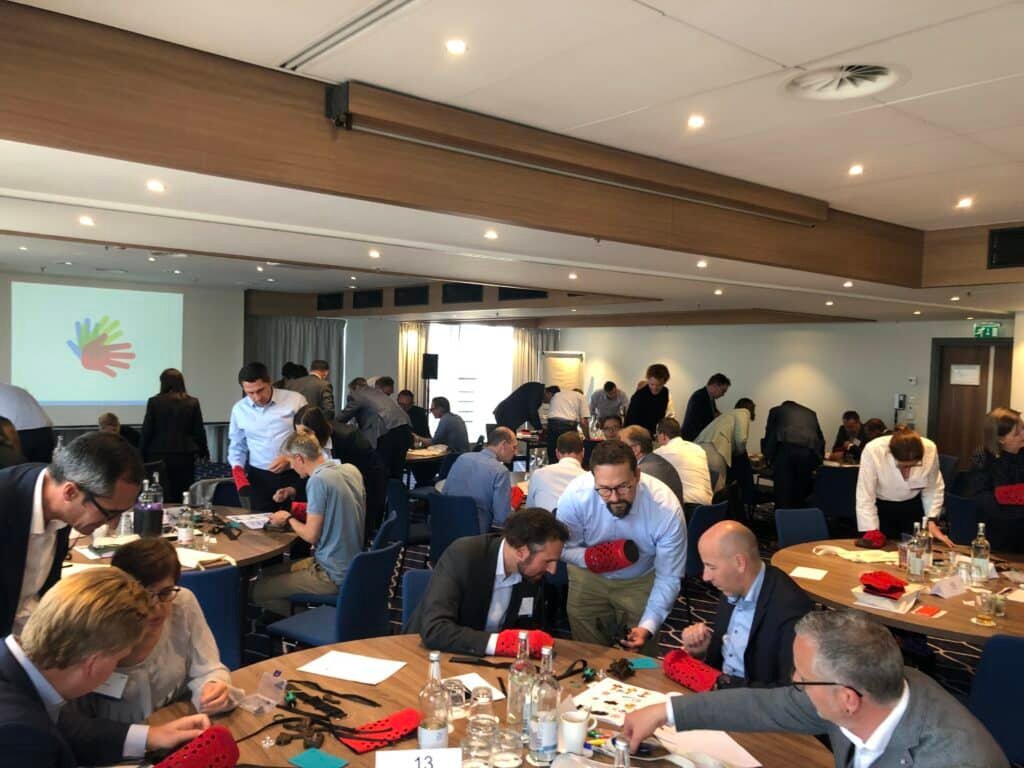
Introduction
In the contemporary workplace, the emphasis on building strong teams has never been more important. Team bonding exercises play a crucial role in this process, directly impacting interpersonal relationships and teamwork at work. This comprehensive blog explores the various aspects of team bonding exercises, their importance in fostering interpersonal relationships, and their impact on teamwork.
Table of Contents:
- Introduction to Team Bonding Exercises
- The Importance and Benefits of Team Bonding Exercises
- Deep Dive into Specific Team Bonding Exercises
- Celebrating Diversity and Regular Implementation of Team Bonding Activities
- Summary and Final Insights on Team Bonding
- Frequently Asked Questions (FAQs)
The Importance of Team Bonding Exercises
Team bonding exercises are key to nurturing a positive and collaborative work environment. These activities help break down barriers, build trust, and enhance communication among team members. They’re not just about fun; they’re essential tools for strengthening the social fabric of a workplace.
Benefits of Team Bonding Exercises:
- Enhanced Communication: By engaging in team bonding exercises, employees learn to communicate more effectively, which is crucial for successful teamwork.
- Improved Team Cohesion: These exercises help in building a sense of unity and camaraderie among team members.
- Increased Employee Morale: Fun and interactive team bonding activities boost employee morale, contributing to a more positive workplace atmosphere.
Types of Team Bonding Exercises:
- Team Challenges and Problem-Solving Activities: Tasks that require collaboration and strategic thinking.
- Outdoor Team Building Activities: Activities like team sports or adventure challenges that encourage teamwork in a different setting.
- Creative Workshops: Sessions that allow team members to express themselves creatively, fostering innovation and collaboration.
Table: Overview of Team Bonding Exercise Types
Type of Exercise | Key Benefits | Examples |
Team Challenges | Strategic Thinking, Collaboration | Escape Rooms, Treasure Hunts |
Outdoor Activities | Physical Engagement, Team Dynamics | Sports Days, Adventure Races |
Creative Workshops | Innovation, Self-expression | Art Classes, Creative Brainstorms |
Implementing Effective Team Bonding Strategies: To ensure the success of team bonding exercises, it’s important to choose activities that align with the team’s interests and the company’s culture. Activities should be inclusive, engaging, and, most importantly, aligned with the goal of enhancing team dynamics.
Specific Team Bonding Exercises and Their Impact
Delving into specific examples of team bonding exercises provides insight into their practical application and benefits. These activities range from simple in-office games to complex, outdoor challenges, each with unique benefits for team dynamics.
- Collaborative Problem-Solving Challenges: These challenges, like escape rooms or business simulations, require team members to work together to solve problems under pressure, enhancing teamwork and strategic thinking.
- Physical Team Building Activities: Activities like team sports, obstacle courses, or group fitness sessions not only promote physical health but also encourage teamwork in a dynamic setting.
Creative and Artistic Workshops: Engaging in creative activities like painting, music, or drama workshops can unlock new ways of collaboration and expression, fostering a deeper understanding among team members.
The Hand Project’s Prosthetic Hand Building Workshop
An exemplary team bonding exercise is The Hand Project’s workshop, where teams collaborate to build prosthetic hands. This unique activity not only fosters team collaboration but also adds a meaningful, humanitarian aspect to team bonding, enhancing empathy and interpersonal relationships among colleagues.

It’s important to assess the impact of these activities. Feedback sessions post-activities, observing changes in team interactions, and monitoring overall team performance are effective ways to monitor their success. Furthermore, regularly scheduled team bonding exercises ensure continuous improvement in team dynamics. These activities should be diverse and adapted over time to meet the evolving needs of the team.
For more insights into impactful team building and its effect on team dynamics, readers can explore “Impactful Teambuilding: Creating Lasting Changes in Team Dynamics”.
Summarising the Power of Team Bonding Exercises
Team bonding exercises are more than just fun activities; they are vital tools for building stronger, more cohesive teams. By engaging in diverse and well-thought-out exercises, teams can transform their interpersonal relationships, leading to a more harmonious and productive work environment.
Reiterating the Benefits:
- Strengthened Interpersonal Connections: Through shared experiences and challenges, team members forge deeper bonds and mutual respect.
- Enhanced Communication: These exercises break down barriers, leading to open and effective communication, a key ingredient for successful teamwork.
- Boosted Morale and Motivation: Fun and interactive activities uplift spirits, leading to a more motivated and engaged workforce.
The Hand Project’s Role in Team Bonding: The Hand Project’s unique workshop stands out for innovative team bonding. By participating in our prosthetic hand-building activity, teams not only collaborate on a meaningful project but also experience the joy of contributing to a greater good. This shared sense of purpose can significantly enhance the bond between team members.
Continuous Improvement in Team Dynamics: The journey of team bonding is ongoing. Regularly introducing new and engaging exercises ensures that the team continues to evolve and grow stronger. It’s about building an environment where teamwork is not just a requirement but a natural, enjoyable part of the workday.
Final Thoughts on Team Bonding Exercises
Incorporating team bonding exercises into the regular rhythm of your workplace can lead to profound changes in team dynamics. It’s an investment in the social and professional fabric of your team, yielding benefits that extend far beyond the walls of the office.
Eager to transform your team’s dynamics and foster stronger interpersonal relationships? Discover the unique and engaging team bonding exercises we offer at The Hand Project. Get in touch with us through our [Contact Page] for more information and to schedule your next team-building event.
Frequently Asked Questions (FAQs)
Q1: What are team bonding exercises, and how do they differ from regular team building? A1: Team bonding exercises are activities specifically designed to strengthen interpersonal relationships within a team. While team building focuses more on achieving specific work-related goals, team bonding aims to enhance the social and emotional connections among team members.
Q2: How often should a team engage in bonding exercises? A2: The frequency can vary depending on the team’s schedule and needs. However, regularly incorporating these exercises, whether monthly or quarterly, can help maintain and strengthen team cohesion.
Q3: Are team bonding exercises effective for remote teams? A3: Yes, there are many virtual team bonding exercises tailored for remote teams. These activities are designed to bridge the physical distance and strengthen connections between remote team members.
Q4: Can team bonding exercises help in reducing workplace conflicts? A4: Absolutely. These exercises improve understanding and communication among team members, which can significantly reduce conflicts and enhance collaboration.
Q5: How does The Hand Project incorporate team bonding in its workshops? A5: The Hand Project’s workshops focus on collaborative and meaningful activities, like building prosthetic hands, which not only require teamwork but also foster a sense of shared purpose and empathy among participants.
Q6: What should be considered when choosing team bonding exercises? A6: Consider the interests and dynamics of your team, the intended outcomes of the exercise, and logistical aspects like time and location. It’s important to choose activities that are inclusive and engaging for all team members.
Q7: Can team bonding exercises improve productivity? A7: Yes, by improving interpersonal relationships and team cohesion, these exercises can lead to a more harmonious work environment, which in turn can enhance overall productivity.
Q8: How can we measure the success of team bonding exercises? A8: Success can be measured through feedback from team members, observing improvements in team interactions, and monitoring changes in team performance and morale over time.
